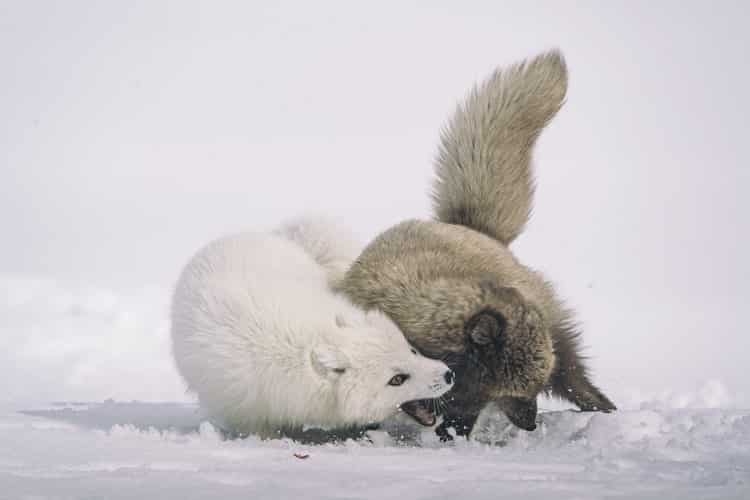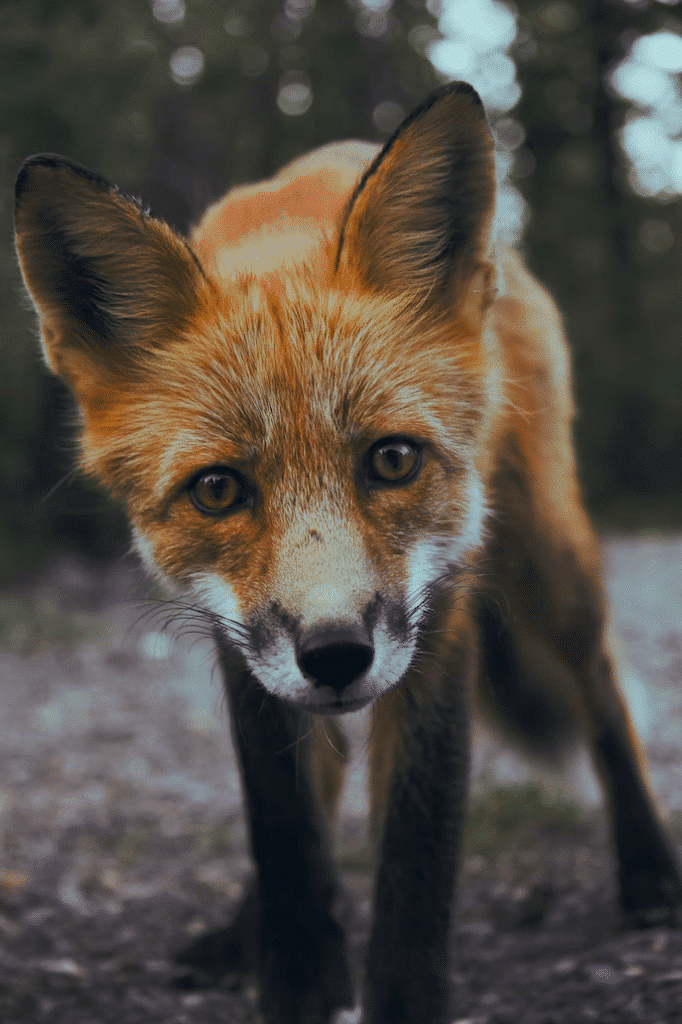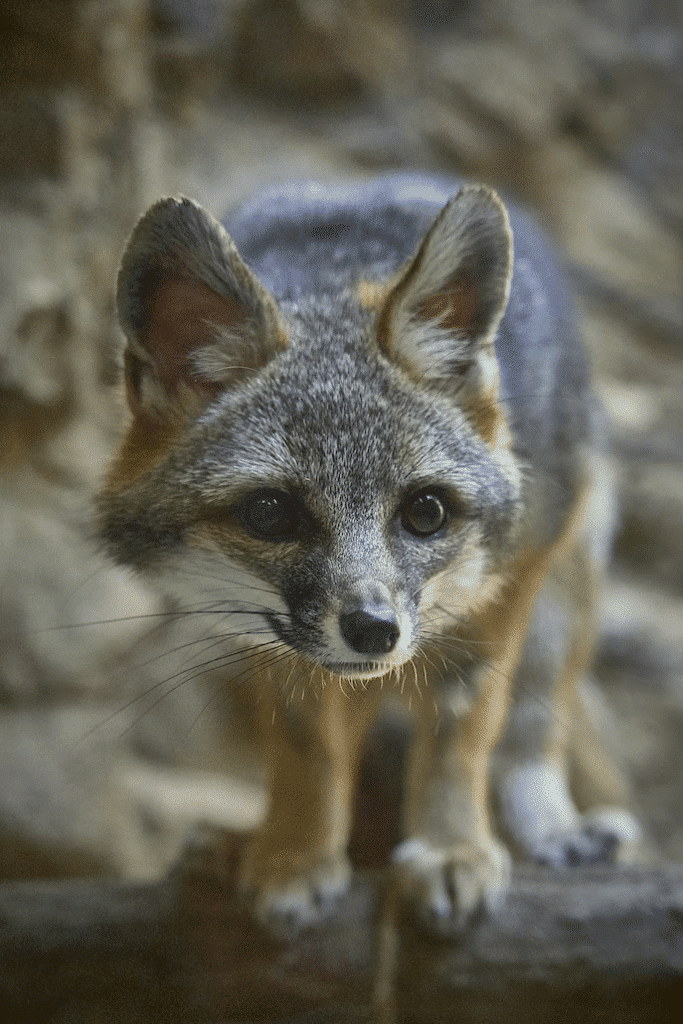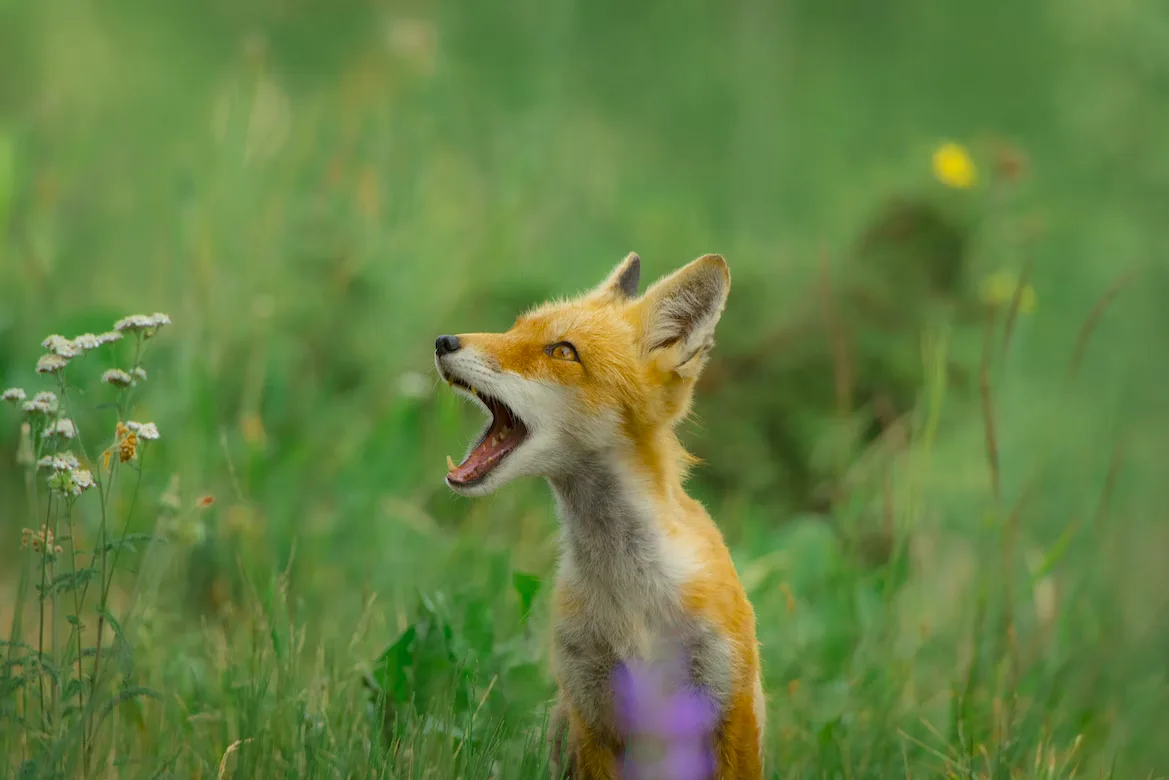Welcome to the world of baby foxes!
Are you ready to enter the enchanting world of baby foxes? Have you ever wondered what makes these adorable creatures so irresistible? Are you ready to be swept off your feet by their soft fur, perky ears, and curious eyes?
Get ready to embark on a sensory journey that will steal your heart and leave you longing for more. From their playful personalities to their adorable naps, there’s so much to discover about these cute little adventurers.
So sit back, relax, and dive into the fascinating world of baby foxes!
Want to jump ahead? Click below
Experience the Charm of Baby Foxes: Fascinating Characteristics that will Steal Your Heart

Are you ready to dive into the world of baby foxes and experience their charm and cuteness? Get ready to be blown away by their fascinating characteristics! Let’s take a closer look at these adorable creatures.
Soft and Fluffy Fur: A Sensory Delight
First of all, let’s talk about their fur. Baby foxes are covered in a soft and fluffy coat of fur that looks like a team of master furriers crafted it. Did you know that the color of their fur changes with the seasons?
In winter, they have thicker and whiter fur to help them blend in with the snow, while in summer, their fur becomes shorter and reddish-brown to match the dry leaves.
Perky Ears and Curious Eyes: Endearing Facial Features
Now, let’s talk about their ears. Baby foxes have large, triangular ears that look like they could pick up radio signals from space.
Their ears are covered in soft fur, making them look like the cutest earmuffs you’ve ever seen. And when they perk up their ears to listen, it’s like they’re trying to catch the latest gossip from the animal kingdom.
Fun fact: foxes have excellent hearing, and their ears can rotate up to 180 degrees to pinpoint the location of their prey.
And let’s not forget about their eyes.
Baby foxes have big, bright, and curious eyes that will instantly steal your heart. Their eyes are so full of wonder and innocence that you can’t help but want to cuddle with them and protect them from the harsh realities of the world.
Did you know that foxes have vertically-slit pupils, just like cats?
This allows them to see better in low light conditions and helps them hunt for food at night.
Playful and Energetic Personalities: The Cutest Little Adventurers
But the most fascinating thing about baby foxes is their playful and energetic personality. They love to play and explore their surroundings, hopping and pouncing around like they’re on a mission to conquer the world.
Whether they’re chasing after their tails or pouncing on a leaf, they’re always up for a good time. Fun fact: foxes are known for their intelligence and cunningness, and they have been known to play tricks on other animals to get what they want.
Adorable Naps: The Cherry on Top
And when they’re tired, they curl up into a ball and take the most adorable naps you’ve ever seen. Their little bodies look like they’re made for snuggles, and watching them sleep is like watching a living stuffed animal.
Did you know that foxes are crepuscular animals, meaning they are most active during dawn and dusk?
This is why you’re most likely to see them during these times of the day.
In short, baby foxes are a sensory delight – from their silky fur to their perky ears and bright eyes, and their playful personalities. They are truly a sight to behold and an experience to cherish.
The life cycle of baby foxes: how baby foxes learn to hunt and survive in the wild

Oh, the life cycle of baby foxes! It’s a tale of cuteness, mischief, and growth. Let me paint you a picture with words.
The story begins in the cozy den of a female fox, where she gives birth to a litter of tiny, wriggling kits. These little ones are born blind and deaf, relying solely on their sense of touch and smell to find their way to their mother’s milk.
As they nurse and grow stronger, their eyes and ears slowly open, revealing bright blue eyes and eager, curious expressions.
Soon enough, the kits are ready to venture out of the den and explore the world beyond. They stumble and play in the soft grass, chasing after each other with uncoordinated leaps and bounds. Their fur is a fluffy mess, and they look like adorable, living teddy bears.
As the days go by, the kits become more adventurous and independent. They learn to hunt and scavenge for food, with their mother guiding them and teaching them valuable survival skills. They pounce on insects and mice, and practice their stealthy moves as they stalk their prey.
Before you know it, the kits have grown into sleek and agile young foxes, ready to strike out on their own. They leave their mother’s side and seek out their own territories, where they’ll establish their own dens and start their own families.
And so, the cycle begins anew.
The kits become parents themselves, passing on the lessons and experiences they learned from their mother. And through it all, the foxes bring joy and wonder to those who are lucky enough to witness their playful antics and sweet nature
Let’s take a closer look at the journey of a baby fox from birth to adulthood.
Birth and Early Life
- Baby foxes, also known as kits, are born in underground dens in the spring.
- At birth, they are completely helpless, blind, and weigh only a few ounces.
- The mother fox, or vixen, takes care of the kits and provides milk for the first few weeks of their lives.
- As the kits grow, they become more active, starting to open their eyes and ears and explore their den.
- The mother fox teaches them important life skills, such as hunting and socializing with their siblings.
Adolescence
- As the kits grow into adolescence, they start to eat solid food and become more independent.
- They start to play-fight with their siblings, practicing their hunting skills and learning to communicate with each other.
- During this time, the kits become more adventurous and start to explore outside their den.
- They also learn how to hunt and catch their own food, under the watchful eye of their mother.
Adulthood
- Around 7-9 months old, the kits reach adulthood and are ready to leave the den and strike out on their own.
- They leave their family and find their own territories to hunt and live in.
- Adult foxes are known for their cunning and intelligence, using their keen senses and stealth to hunt for food and evade predators.
- They can live up to 14 years in the wild, but unfortunately face many threats from humans, cars, and other predators.
How many Types of baby foxes are there?

With their fluffy fur, curious eyes, and playful personalities, these adorable creatures are sure to captivate your heart. But did you know that not all baby foxes are the same? From the mischievous red fox to the nimble grey fox, each species has its own unique charm and quirks that make them stand out.
Let’s take a closer look at the different types of baby foxes out there, and discover what makes each one so special!
The Cunning Red Fox
- Red fox kits are known for their fiery red fur and playful personalities.
- They are born in the spring and weigh only a few ounces at birth.
- The mother fox takes care of them for the first few weeks of their lives, providing milk and teaching them important life skills.
- As they grow, they become more active and adventurous, exploring their surroundings and playing with their siblings.
- Red fox kits are known for their cunning and intelligence, using their sharp senses to hunt and avoid predators.
The Resilient Arctic Fox
- Arctic fox kits are born in the winter in the frigid tundra of the Arctic.
- They are born with white fur to blend in with the snow, but their fur turns brown in the summer.
- The mother fox takes care of them in an underground den, keeping them warm and protected from the harsh elements.
- As they grow, they become skilled hunters, catching lemmings and other small prey in the snow.
- Arctic fox kits are known for their resilience and adaptability, surviving in one of the harshest environments on Earth.
The Nimble Grey Fox
- Grey fox kits are born in the spring and are found in North and Central America.
- They are born with a distinctive black stripe down their back and brown fur.
- The mother fox takes care of them for the first few weeks of their lives, providing milk and teaching them important life skills.
- As they grow, they become more independent and start to explore their surroundings.
- Grey fox kits are known for their agility and climbing skills, able to climb trees to escape predators.
How do Baby Foxes communicate?

Baby foxes, like many other social animals, communicate with each other using a range of vocalizations and body language. Their language is highly complex, with a range of different sounds and gestures that convey a variety of meanings and emotions.
For example, when baby foxes are feeling threatened or afraid, they may emit a high-pitched, piercing scream that serves as a warning to others in the area. They may also growl or hiss to show their displeasure or aggression.
On the other hand, when baby foxes are feeling playful and content, they may emit soft whimpers and chirps, or engage in mock fights and wrestling matches with their siblings.
These playful interactions not only help to develop their physical skills and coordination, but also serve as a form of social bonding and communication.
In addition to vocalizations, baby foxes also use body language to communicate with each other. They may raise their tails to signal friendliness and approachability, or flatten their ears and bare their teeth to show aggression and dominance.
They may also use eye contact, postural changes, and other subtle cues to convey their intentions and emotions.
16 New Fun Facts About Baby Foxes (Number 3 will surprise you!)

Baby foxes are one of nature’s most enchanting creations. From their unique behaviors to their fascinating adaptations, there is so much to learn and discover about these captivating creatures.
Here are 16 facts that will make you fall even more in love with baby foxes:
16: Baby foxes are born blind and deaf.
When baby foxes, also known as kits or cubs, are born, they are completely helpless. They rely on their mother for warmth, nourishment, and protection.
15. Baby foxes develop rapidly.
Despite their vulnerable state at birth, baby foxes develop quickly. Within just two weeks, they will open their eyes and start to explore their den.
14. Baby foxes communicate using a variety of sounds.
Baby foxes communicate with each other and their mother using a range of sounds, from high-pitched whines to throaty barks.
13. Baby foxes have a keen sense of smell.
While their eyesight and hearing are not fully developed at birth, baby foxes have a highly developed sense of smell, which they use to find their mother’s milk and navigate their environment.
12. Baby foxes are incredibly playful.
Baby foxes are full of energy and love to play. They engage in games of chase and wrestling with their siblings, which helps them develop important social and physical skills.
11. Baby foxes are born with a white-tipped tail.
One distinctive feature of baby foxes is their white-tipped tail, which helps their mother keep track of them as they explore their den.
10. Baby foxes are born with blue eyes.
When baby foxes first open their eyes, they are a bright blue color. As they mature, their eye color will change to brown or amber.
9. Baby foxes are highly adaptable.
Foxes are known for their adaptability, and baby foxes are no exception. They can thrive in a variety of environments, from forests to deserts to urban areas.
8. Baby foxes are excellent hunters.
Even at a young age, baby foxes are learning to hunt. They practice stalking and pouncing on insects and small animals, honing their skills for when they are older.
7. Baby foxes are raised in family groups.
Foxes are social animals and live in family groups called a “skulk” or a “leash.” The mother and father fox, along with their offspring from previous years, help care for the new litter of kits.
6. Baby foxes have retractable claws.
Like their adult counterparts, baby foxes have retractable claws that help them climb trees and dig dens.
5. Baby foxes have a thick, fluffy coat.
To keep warm in their den, baby foxes are born with a thick, fluffy coat of fur. As they mature, their fur will become more sleek and shiny.
4. Baby foxes have an average litter size of four to five kits.
While the exact litter size varies by species, the average litter size for baby foxes is four to five kits.
3. Baby foxes are born with closed ears.
In addition to being blind, baby foxes are born with their ears closed. It takes about two weeks for their ears to fully open.
2. Baby foxes are susceptible to parasites.
Baby foxes can be susceptible to parasites such as ticks and fleas, which can cause health problems if left untreated.
1. Baby foxes are important members of their ecosystem.
As predators and scavengers, foxes play an important role in their ecosystem. By controlling populations of rodents and other small animals, they help maintain a healthy balance of species.
Can A Fox Be A Pet?

Have you ever looked at a cute little fox and thought, “I wish I could have one as a pet?”
Well, you’re not alone. Many people are fascinated by these adorable creatures and wonder if they could make a good pet. But can a fox really be a pet?
The short answer is, technically, yes, some species of foxes can be kept as pets. However, it’s not as simple as just bringing one home from the wild or buying one from a pet store.
There are many factors to consider before making the decision to have a fox as a pet.
Here are some things to keep in mind:
Legal restrictions
Before even considering a fox as a pet, you need to make sure it’s legal to own one where you live. Some states or cities have strict laws regarding exotic pets, including foxes.
Domestication
Just because a fox can be kept as a pet doesn’t mean it’s domesticated. Domesticated animals have been bred and raised specifically to be companions to humans, while wild animals like foxes are not. This means that foxes may not behave like typical pets and can be difficult to train and handle.
Socialization
If you do decide to get a fox as a pet, it’s important to socialize them properly. This means exposing them to different people, animals, and situations to help them become comfortable and less fearful.
Diet and habitat
Foxes have specific dietary and habitat needs that may be difficult to replicate in a home setting. They need plenty of space to run and play, and their diet may include live prey like mice or insects.
Lifespan and commitment
Foxes can live up to 14 years in captivity, so owning one is a long-term commitment. You also need to be prepared for the cost and time commitment of caring for a fox, including regular vet visits and proper nutrition.
With proper research, preparation, and care, a fox can potentially make a unique and rewarding pet for the right owner.
Wrapping Up on Baby Foxes
As you can see, owning a fox as a pet is a decision that should not be taken lightly. While these creatures are undoubtedly adorable and fascinating, they also require a lot of dedication, patience, and resources to thrive in a domestic environment.
It’s essential to understand the risks and responsibilities that come with having a fox as a pet before making a decision. However, for those willing to take on the challenge, the bond that can be formed with these intelligent and playful creatures is truly unique and rewarding.
So, are you ready to take the leap and embark on this furry adventure?
Thanks for following along with us! Next up Discover the world of Baby Deer.
Join our Forum for free today!

- Big Cats Love Mouthing Affection - July 22, 2024
- Kind Elephant Merciful To Lion Cubs - July 22, 2024
- Beachgoers Save Massive Shark Stranded In Florida - July 22, 2024


